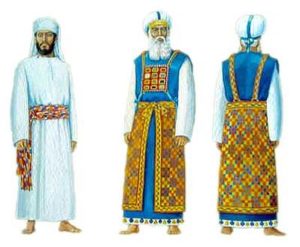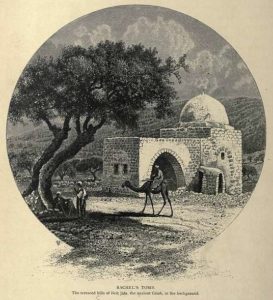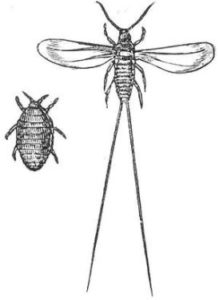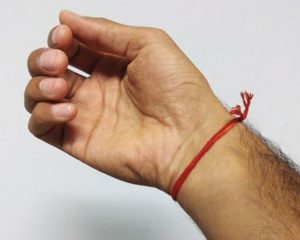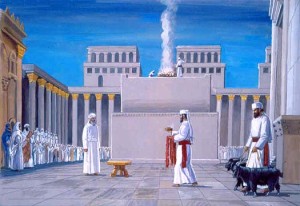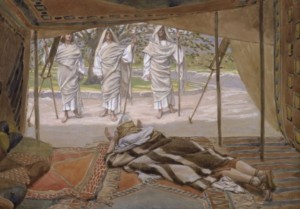
‘Abraham and the Three Angels’ by James Tissot
This week’s parasha, Vayera, begins with Abraham being visited by a trio of angels. Jewish tradition holds that these angels were Michael, Gabriel, and Raphael. The Ba’al HaTurim (Rabbi Yakov ben Asher, c. 1269-1343)—famous for his numerological commentary—points out that the words “And behold three…” (והנה שלשה), referring to the three angels, has the same gematria (701) as “these are Michael, Gabriel, and Raphael” (אלו מיכאל גבריאל ורפאל).
Rashi (Rabbi Shlomo ben Itzchak, 1040-1105) comments that each angel came for a specific mission: Michael to bless Abraham and Sarah with news of their impending child; Gabriel to destroy Sodom (which happens right after in the Torah); and Raphael to heal Abraham from his circumcision (which happened just before). The root of Gabriel is gevurah, “strength” or “restraint”, which is why Gabriel often appears in difficult situations, or acts of destruction. The root of Raphael is refuah, “healing”, so he appears whenever a recovery is required. Michael is the guardian angel of Israel, as we are told explicitly in Daniel 12:1.
These three angels regularly appear together. They were originally depicted as the highest of the angels in the Heavens. Later mystical literature would place others above them (namely Metatron). Still, the trio of Michael, Gabriel, and Raphael remain the most well-known. What else do we know about them?
Michael: Priest and Saviour
In one mystical passage, the Talmud (Chagigah 12b) outlines the Seven Heavens. The first is called Vilon (“curtain”) and simply refers to the atmosphere stretching over the Earth like a curtain. This is the place of clouds and weather, serving no particular spiritual purpose. Then comes the Rakia, the vast realm beyond Earth’s atmosphere that includes the Sun, moon, and all the stars and planets, ie. outer space. The third Heaven is called Shechakim, which we learn from other sources is the interface between this physical universe and the spiritual realms beyond. The Sages sometimes metaphorically describe it as being composed of millstones, or slabs of pure marble. The Talmud says this is the source of the manna that the Israelites ate in the Wilderness.
The fifth, sixth, and seventh Heavens are called Ma’on, Machon, and Aravot, but it is the fourth Heaven that is of particular interest for the present discussion. Here one will find the illustrious Yerushalaim shel Ma’alah, the Heavenly Jerusalem, a spiritual version of the Jerusalem below. Mirroring the one on Earth, there is a Temple up there, too, and it is Michael who serves as its High Priest.
Michael also serves as “Prince of Israel” and our Heavenly Guardian. In this role, he stands opposite Samael, the Heavenly “Accuser” who seeks to harm Israel. Hence, Michael stands at the gates of Heaven, admitting the righteous and guiding their souls. Similarly, he was Israel’s guide during their forty years in the Wilderness, being identified with the “angel that will go before you” (Exodus 23:20, 32:34), as God has promised (see Midrash haNe’elam, Beresheet 2).
Naturally, Michael is a great saviour for the Jews. It was he who saved Abraham from the fiery furnace (Beresheet Rabbah 44:16), and protected Sarah when she was abducted by Avimelech (Pirkei d’Rabbi Eliezer 26). In one intriguing Midrash (Yalkut Shimoni, Beresheet 134), we learn that Michael saved the baby that was born from Dinah’s rape by Shechem. Michael took the baby to Egypt, into the care of a wealthy childless couple. That wealthy man was Potiphar, and the adopted baby was Osnat, future wife of Joseph!
Gabriel and the Founding of Rome
When it comes to Joseph, it was Gabriel that helped him throughout his journey. According to the Talmud (Sotah 36b), Gabriel taught Joseph overnight (or perhaps “uploaded” into his brain) knowledge of the seventy languages, which allowed him to become viceroy of Egypt. Gabriel also taught Joseph all of the esoteric mystical wisdom of the Torah (while Raphael taught the same wisdom to Isaac; see Ravad on Sefer Yetzirah).
The Talmud credits Gabriel with setting the foundations of Ancient Rome (Shabbat 56b). This happened on the very same day that King Solomon married an Egyptian princess. Although Solomon’s intensions were certainly good, his many marriages spiralled out of control, and ultimately led to his downfall. In poetic fashion, King Solomon first builds Jerusalem’s Temple, and simultaneously sows the seeds of its destruction, for Rome would go on to destroy Jerusalem’s Temple for good, ushering in an endless exile which we are still in.
Interestingly, archaeologists have found coins bearing images depicting this version of Rome’s founding. The coins show a divine being of some sort planting reeds in the Tiber River to set the foundations of the “eternal city”, just as the Talmud describes. These coins were minted in the time of Emperor Antoninus Pius, which is most fitting because the Talmud tells us that a Roman emperor named Antoninus was good friends with Rabbi Yehudah haNasi, and the two engaged in many philosophical discussions.
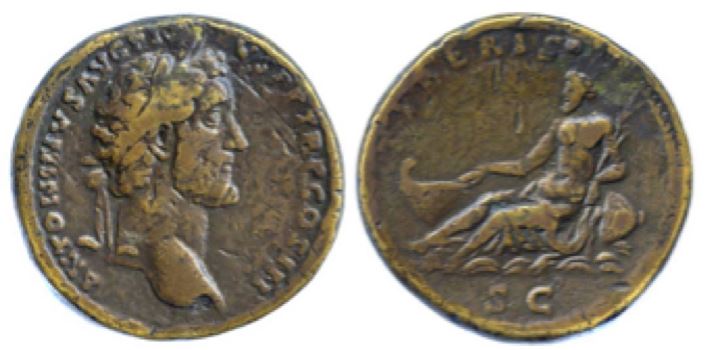
Coins minted by Emperor Antoninus depicting the founding of Rome.


